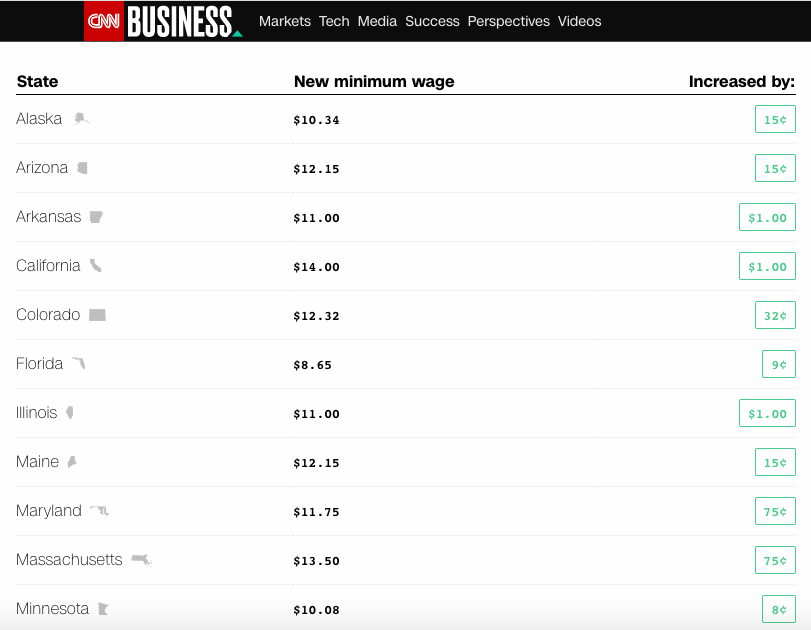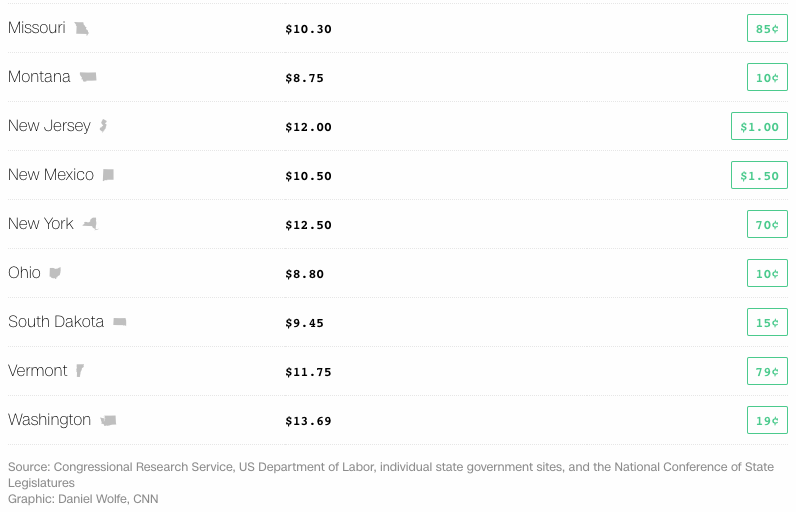The US legislation allows states to set minimums above the Federal standard, and 30 US states and the District of Columbia have done so. As of January 2021, either as a result of pre-existing formulas for annual increases or special legislation arising out of the COVID-19 pandemic, 20 US states will progressively increase their minimum wage rates. The minimum wages and increases vary from state to state. For example, “in New Mexico, the minimum wage will increase to $10.50, up $1.50 from the current $9 wage. And in California, the rate for employers with 26 workers or more will rise from $13 to $14 an hour, the highest state-wide baseline in the country. In Minnesota, the gain is just 8 cents, to a $10.08 hourly rate for large employers” (CNN business). The District of Columbia has implemented a minimum wage of USD $15 per hour, with indexed increases beginning in 2021. 20 US states continue to have a minimum wage either equal to or below the federal level, in which case the Federal floor will apply.
A majority of the US supports increasing the Federal minimum wage, and trade unions such as the Service Employees International Union have been pushing to increase it to USD $15 per hour. New U.S. President, Joseph R. Biden, Jr., has also promised to increase the federal minimum wage up to USD $15 an hour, eliminate the tipped minimum wage, and index the minimum wage to the median hourly wage as part of his COVID-19 relief package.
The U.S. business community’s views are varied. Many large businesses have already adopted minimum wages above the Federal standard, some as high as USD $15. The Business Roundtable, an association of CEOs, supports increasing the federal minimum, but advocates phasing it over several years to minimize potential adverse economic effects. Others have expressed concerns about the impact of an increased federal minimum on small businesses and the ability of businesses to absorb abrupt increases and maintain employment levels, particularly in the midst other economic challenges presented by the COVID-19 pandemic.

